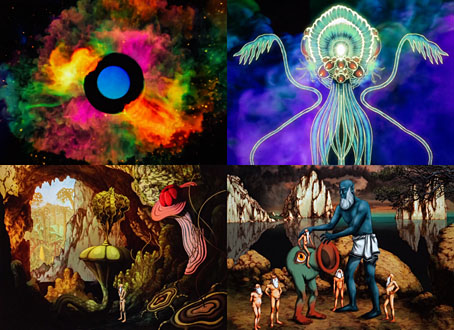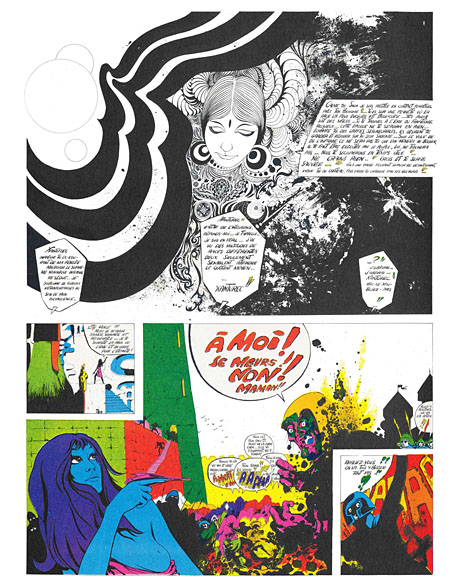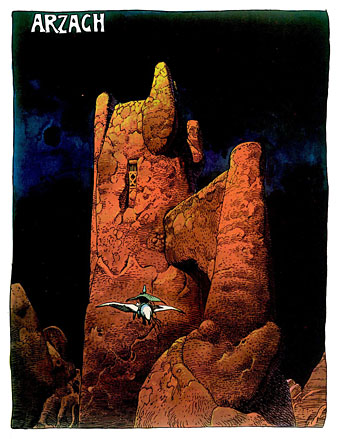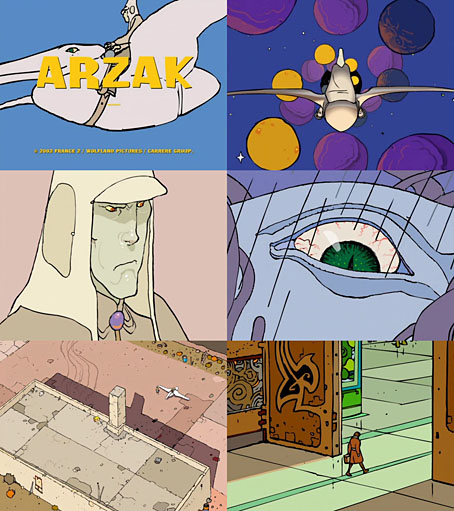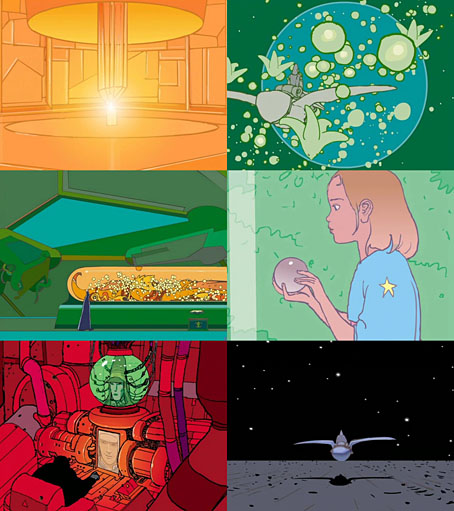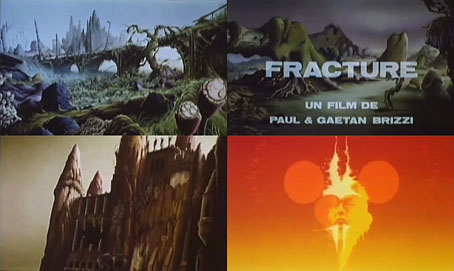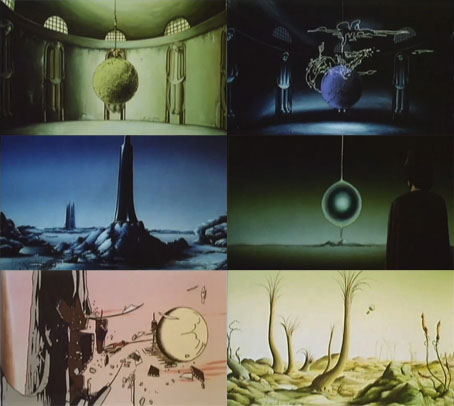I was going to mention this one a few weeks ago but it vanished from Vimeo for a while following some kind of copyright complaint. It’s good to find it returned. Terra Incognita is 20 minutes of animated fantasy that’s very reminiscent of René Laloux’s cult SF films Fantastic Planet (1973) and Gandahar (1988), also the Brizzi Brothers’ Fracture (1977). Much as I’d like to see another feature in the Laloux manner, something spun from the art styles of Métal Hurlant, short films are the most you can realistically hope for outside Japan. (There is another Caza-designed feature, The Rain Children, but like the Druillet-designed TV series, Bleu, l’enfant de la Terre, it’s a simpler story aimed at a juvenile audience.)
Terra Incognita was directed by Adrian Dexter and Pernille Kjaer, with the pair also working on the backgrounds and storyboards. The first part of the film is a creation myth which establishes the genesis of a mysterious island somewhere on the Earth whose inhabitants are four prematurely aged, immortal men. The quartet share the island with the blue giant who created them, together with a variety of unusual flora and fauna which includes luminescent psychotropic mushrooms. The accidental death of their creator leaves the islanders marooned in a world they were only beginning to learn about. The film is meticulously crafted, with an open-ended narrative that avoids melodrama when the men are faced with incursions from the outside world. And there’s a further connection to 70s’ fantasy in the soundtrack which incorporates a piece from Bo Hansson’s prog-synthesizer album, Music Inspired By Lord Of The Rings. Films like this require so much creative effort that you can’t expect more of the same any time soon, but I’m curious to see what Dexter & Kjaer may do in the future.
Previously on { feuilleton }
• Arzak Rhapsody
• Fracture by Paul and Gaëtan Brizzi
• The Captive, a film by René Laloux

